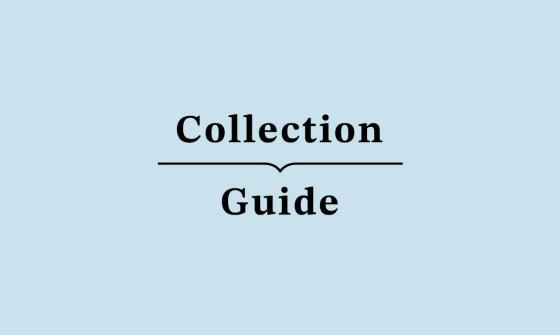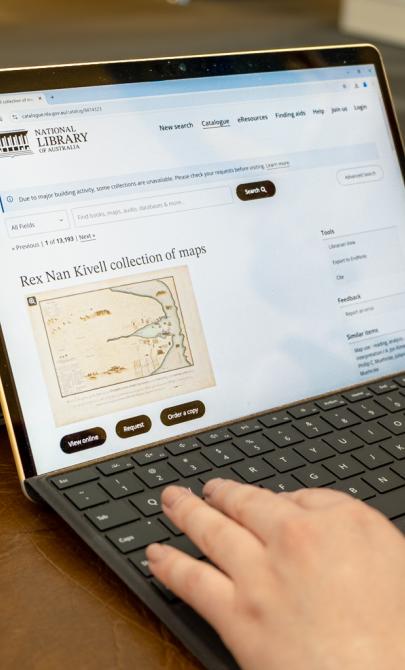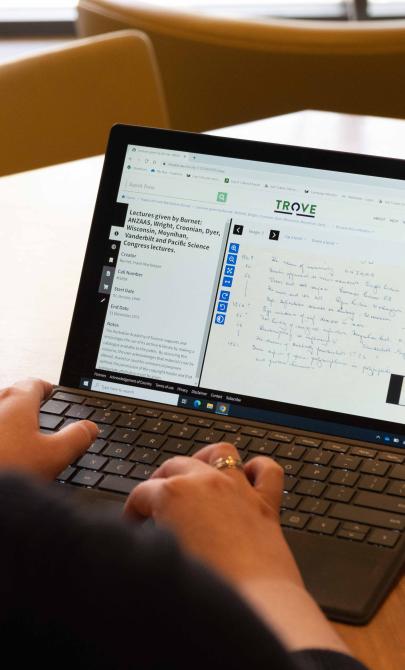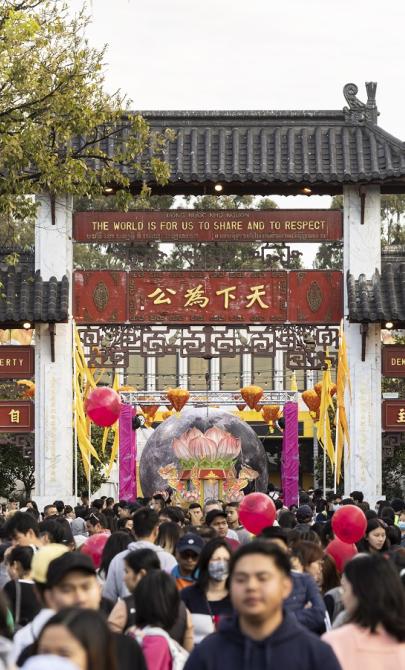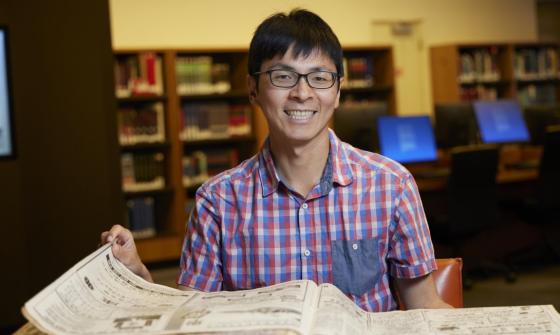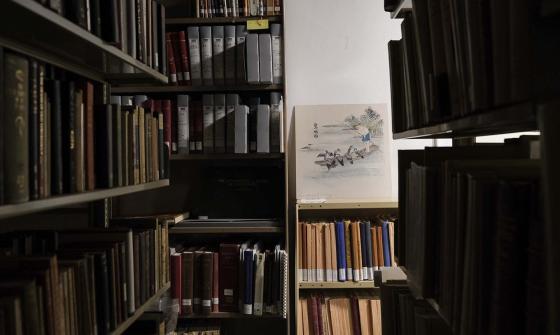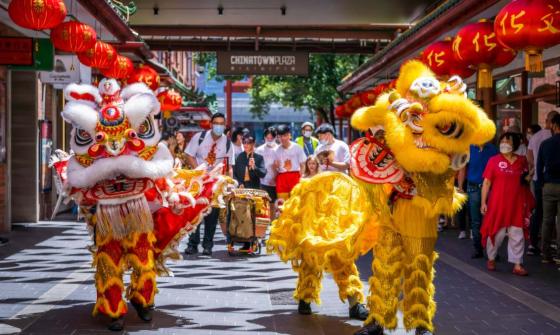Chinese collections research guide
About the collection
The Chinese collection covers all subject areas. It focuses on the humanities and social sciences with an emphasis on history, culture, society, economic, politics and government of modern and contemporary China.

Researching your family history?
Find resources to help you learn about your domestic family history or trace your ancestral origins overseas in our Chinese-Australian family history research guide.
The collection is rich in rare and unique works, including the Library's earliest printed book. It is especially strong in:
- local gazetteers
- collectanea
- writings of individuals of the Qing periods (1644 to 1912)
- rare books (from the 12th to 19th centuries)
- primary and secondary sources for the study of the history of modern and contemporary China.
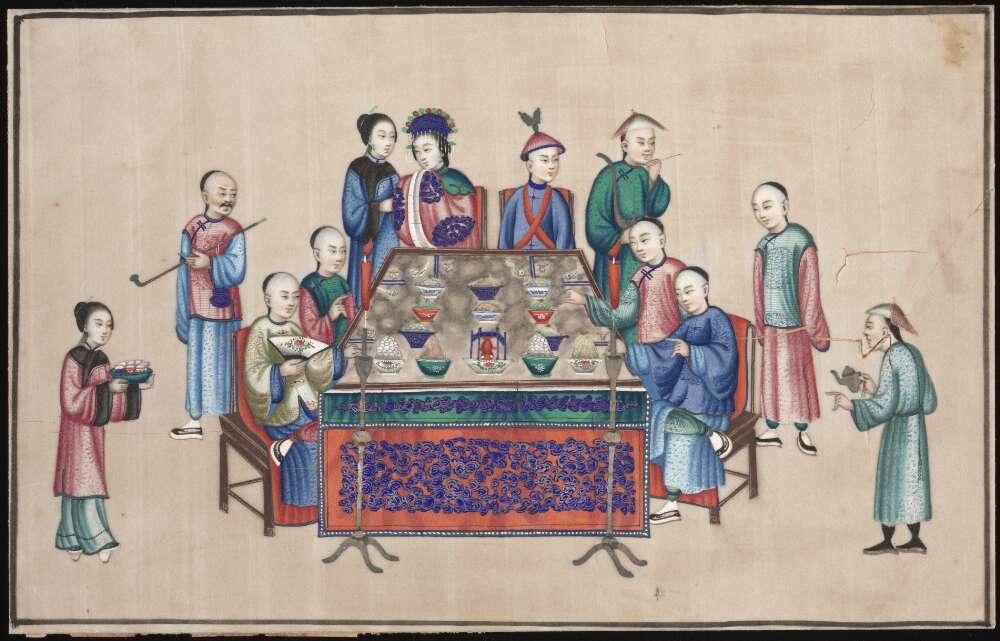
Hun yan = A Chinese wedding banquet, 1850, nla.gov.au/nla.obj-300139263
Hun yan = A Chinese wedding banquet, 1850, nla.gov.au/nla.obj-300139263
Major collections
Some materials in the collection are digitised and made freely online available, including:
- Pith paintings: We hold the largest collection of Chinese pith paintings in Australia. They complement and illustrate our extensive resources on 19th century China and its interaction with the West.
- Chinese posters
Guides to selected collections
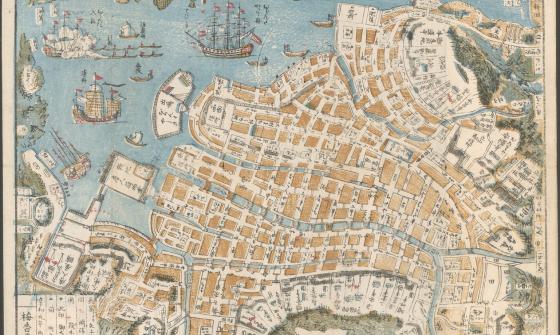
Shinsen Nagasaki no zu, 1801, nla.cat-vn3644559

Chinatown, Darwin, 1930, nla.gov.au/nla.obj-136768825
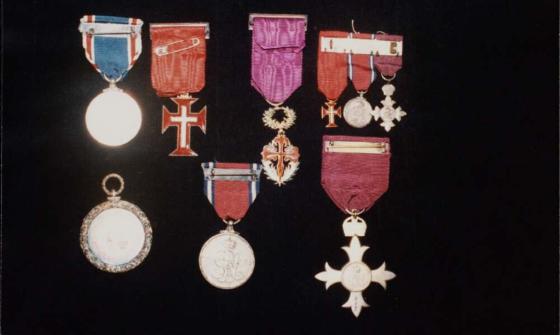
Medals awarded to J.P. and J.M. Braga, including an OBE awarded to J.P. Braga, 1935, nla.gov.au/nla.obj-147186954
Key sources
Materials and items in the Chinese collection are in a range of formats.
The collection includes the Library's oldest book - a 12th century printing of the Buddhist scriptures in Chinese.
Other rare and unique 19th Century works, include:
eResources tip
To access some eResources, you need to visit the Library in person or log in. Find out more about how to access eResources.
Search engine and bibliographical tool
Covers over 3 million Chinese publications from the early 1930s to the present. You can search across full-text books, journals, newspapers, theses and dissertations, conference proceedings and a wide range of other documents.
The 图书馆文献传递 service allows you to request up to 50 pages or 20% of a book and have it sent to you via email.
Online journals and magazines
Indexes thousands of research level Chinese language periodicals. You can search for journal titles using the 'Journal Navigation' button. We provide full text access to 3 CAJ series:
- Series G Politics, Military Affairs, Law
- Series H Education and Social Sciences
- Series J Economics and Management.
CEPS Zhong wen dian zi qi kan zi liao ku ji ping tai fu wu = CEPS中文電子期刊資料庫曁平台服務
CEPS, Chinese electronic periodical Service or Airiti journals includes more than 5,600 academic journals and concentrates chiefly on publications from Taiwan.
Dacheng lao jiu kan quan wen shu ju ku = 大成老旧刊全文数据库
Dacheng Old Periodical covers a collection of over 7,000 Chinese periodicals published between 1840 and 1949 in Mainland China. Many of the titles in this database are rare and unique, providing insight into how China became what it is today. Journals from this database do not have individual catalogue records searchable through the Library’s catalogue. Search or browse titles in this database directly.
Zhong gong dang shi qi kan shu ju ku = 中共党史期刊数据库 ( -1949)
Over 300 titles of Chinese Communist Party related journals published between 1921 and 1949. Journals from this database do not have individual catalogue records searchable through the Library’s catalogue. Search for titles through the database directly.
Dong fang za zhi = Eastern miscellany (東方雜誌)
Published between 1904 and 1948, the Eastern Miscellany is one of China’s most prominent magazines.
Covers newspapers and magazines from all over the world in more than 60 languages, including the Chinese language. There are about 340 Chinese publications available in the database. Examples of them are: 中国新闻周刊, 民生周刊, 女友, 意林, 凤凰生活周刊, 遠見 and 聯合報. Titles available from this database do not have individual catalogue records searchable through the Library’s catalogue. Use the countries and/or languages options in the database to find Chinese publications.
eBooks
You can access thousands of Chinese eBooks from these databases:
- Apabi shu zi zi yuan ping tai Apabi 数字资源平台 (China Digital Library)
- CNKI eBooks CNKI电子图书库
- iRead eBooks 華藝電子書
- Chinamaxx digital libraries 中文集献
- Zhongguo ji ben gu ji ku = 中國基本古籍庫 V7.0.
English databases
A comprehensive collection of full-text newspapers globally. It provides extensive coverage at international, national, and regional level. It includes Chinese news sources, such as China Daily, China Post, Shanghai Daily, South China Morning Post and Global Times.
Published from 1864 to 1950 (with a wartime break 1941 to 1945). The North-China Daily News (字林西報), was the most influential foreign daily in East Asia, and the key source for the history of Western interests in China and the transnational history of East Asia.
Policing the Shanghai International Settlement, 1894-1945
This collection contains a large portion of the archives of the British run municipal police force based in Shangai's former International Settlement. The most extensive coverage is provided by the Special Branch dossier files, dating from 1929 to 1945. Other documents include supporting reports, handbills, translations of Chinese press coverage and clippings from the English Language press.
Tiananmen Square and U.S.-China relations, 1989-1993
A digital collection of 366 items reviews relations between the United States and China in the post-Cold War Era. It analyses the significance of the 1989 Tienanmen Square demonstrations, China's human rights issues, and resumption of World Bank loans to China in July 1990. Reproduction of the original documents from the George H. W. Bush Presidential Library.
Current newspapers
Ren min ri bao tu wen shu ju ku (People’s Daily) (1946 to present)
The official voice of the government of the People’s Republic of China. Go to the People Data 人民数据, select the title 人民日报 listed on the left-hand side panel under the heading 报刊资料.
To access People's Daily, you need to visit the Library in person or log in to eResources.
Early Chinese newspapers
The 4 earliest known Chinese-Australian newspapers are available in Trove.
- Chinese Advertiser (1856)
- English and Chinese Advertiser (1856-1858)
- Chinese Australian Herald (1894-1923)
- Tung Wah News (1898-1902)
- Tung Wah Times (1911-1936)
- Chinese Times (1902-1922)
Chinese-Australian newspapers
Twelve Chinese newspapers are known to have been published in Australia between the 1850s and 1950s. They include:
Our oral history collection includes hundreds of individual interviews and recordings by Chinese migrants, Australians with Chinese background, Australian diplomats, politicians, academics, delegations and others who lived or visited China.
Diana Giese oral history projects
Comprising 77 interviews with Chinese Australians, recorded between 1992 and 2002 in Darwin, Cairns, Brisbane, Sydney, Melbourne, Innisfail, Townsville, Broome and Hobart. These collections include interviews with notable public figures as well as pioneers and community leaders, business people, artists and intellectuals, politicians, and members of the large Kwong, Chin, Fong, Yuen and Tong families.
Australia-China oral history project
Conducted in association with the Australia-China Council and the Museum of Chinese Australian History. Includes 13 interviews with Australians living in China and Chinese Australians born in Australia before WWII.
Beyond the cables - Australian Ambassadors to China oral history project
Former Australian ambassadors to the People’s Republic of China are interviewed to mark the 40th anniversary (1972-2012) of diplomatic relations between China and Australia.
China Maytime Festival Tour 1971 project
Relevant oral histories include interviews with early official and cultural delegations to China.
Cultural context of unemployment oral history project
Featuring unemployed Indochinese refugees.
Australian diplomacy 1950-1990 project
Former diplomats, many of whom spent some time in China share their experience and stories.
We hold Chinese-related content in personal papers, diaries, documents, photographs, images, maps, rare books, and ephemera.
Manuscripts and papers
- Papers of the Chau family, 1893-1998 [manuscript]
- Records of the Committee for Australia-China Relations, 1972-1989
- Papers of Myra Roper, 1958-1981
- Papers of Dennis Argall, 1984-1988
- Papers of Diana Giese, 1990-2014
Ephemera
Book
Images
Minguo tu pian zi yuan ku = 民國圖片資源庫 1911-1949 (Digital image collections of Republic of China
Historical photographs for the period 1911-1949 are rare first hand materials that illuminate aspects of life and events of the time. The database consists of consists of 70,000 photographs, mostly from the Republic Era, with a small number of items from the Qing Dynasty.
Through legal deposit, a collection of Chinese language publications including books, newspapers, magazines, community newsletters, reports and yearbooks has been acquired. Find out more about legal deposit.
How to search and find items
These tips will help you search for and access material in our Chinese collections.
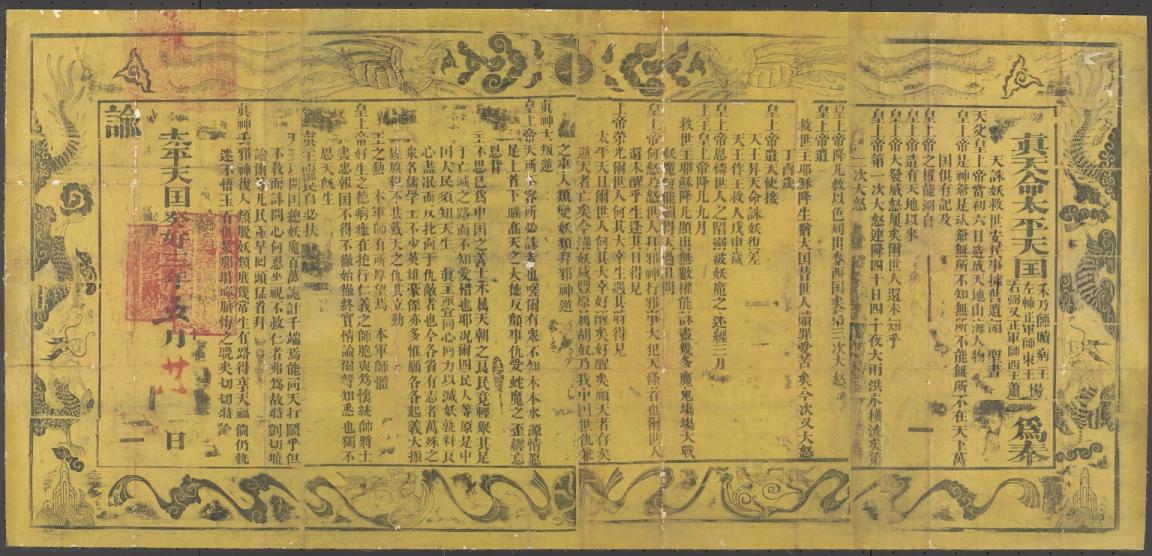
Xiuqing Yang & Chaogui Xiao, Zhen tian ming Tai ping tian guo ... wei feng tian zhu yao jiu shi an min shi .., 1853, nla.gov.au/nla.obj-61327160
Xiuqing Yang & Chaogui Xiao, Zhen tian ming Tai ping tian guo ... wei feng tian zhu yao jiu shi an min shi .., 1853, nla.gov.au/nla.obj-61327160
Search the catalogue
Use keywords or search by title, author or subject. Learn more about how to use the catalogue.
Filter search results
Narrow your results after your first initial word search, using the options on the right side (including format, E-resources, author, subject area, series or decade). For example:
- search by keyword and apply the language filter to limit results to Chinese, or the geographic filter to limit results to China.
- find an eBook by entering the title, author or keyword and limit results using the book and subscribed database options.
Browse by subject
When you find a result that you like, find the subject headings in the record and use them to find other materials on the same topic. You can select the subject heading of an item in the collection to find more items by that subject. Some examples are:
- Zhongguo gong chan dang (subject heading for the Chinese Communist Party)
- China – History – Qing dynasty, 1644-1912
- Chinese -- Australia -- History
- Art, Chinese
Use call number
To locate specific collections or browse through related items, you can use call numbers to navigate. For example:
- to find a list of items in the London Missionary Society collection, search the call number prefix ‘LMS’
- to browse books in the Chinese Australian collection, search by the call number ‘CHN’.
Search in English or Chinese
You can search the catalogue using:
- English
- Chinese (simplified or traditional characters)
- Chinese Romanization Pinyin (拼音).
When using Pinyin as keywords, follow the Library of Congress ALA-LC Romanization Rules (PDF, 428 KB).
Browse eResources
You can access online databases, subscriptions and more via our eResources portal:
- browse for databases alphabetically
- search for specific databases
- browse by subject or category by selecting browse eResources and selecting filters under Browse by category. For example:
You need to visit the Library in person or log in to access some eResources. Find out more about how to access eResources.
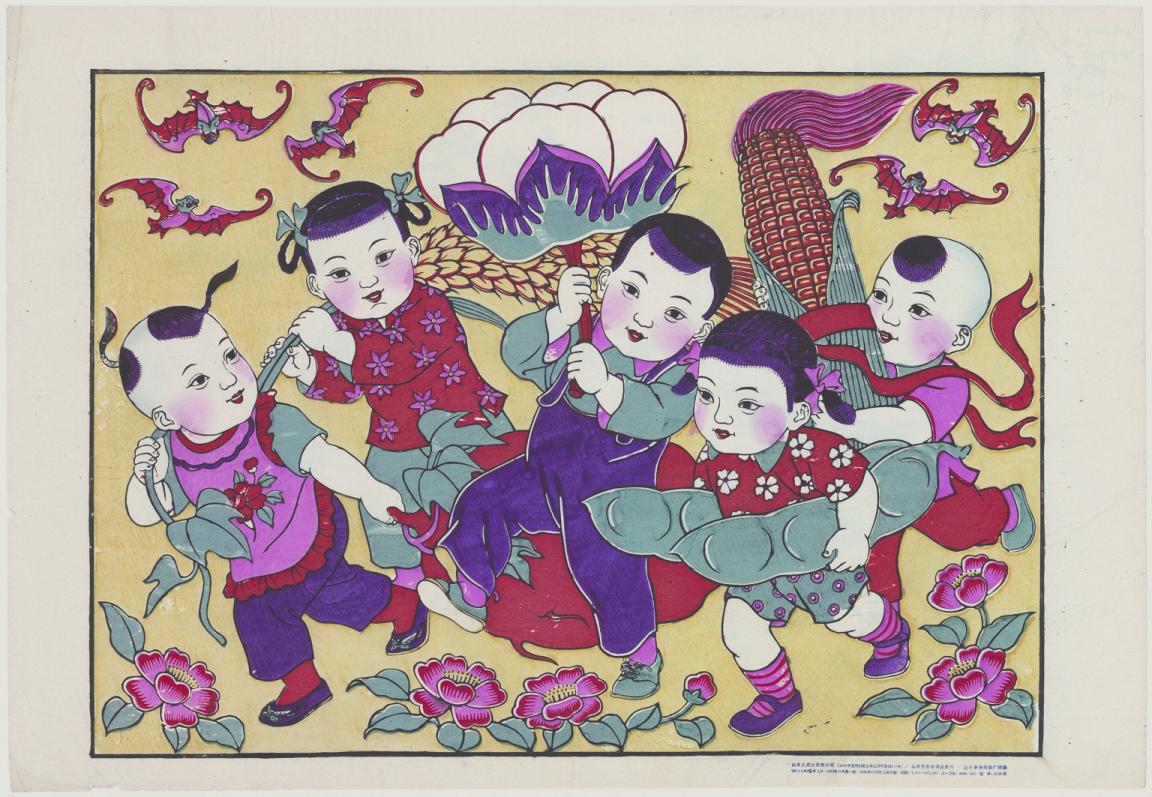
Zhongguo nian hua = Chinese New Year print, 1959, nla.gov.au/nla.obj-587500007
Zhongguo nian hua = Chinese New Year print, 1959, nla.gov.au/nla.obj-587500007
Request an item
Visit the Library to access print material, maps, artworks, rare books and objects in person. To use materials in person, you will need to request them through the catalogue using your Library login.
Once you've requested an item, most books and journals from the Chinese collection will be delivered through the Main Reading Room, but some items will be delivered through the Special Collections Reading Room. Read more about our reading rooms.
Find out more about how to request items through the catalogue.
Search Trove
You can use Trove to explore China studies resources the National Library and from other institutions, including state and university libraries.
For example, Trove searches the Australian National University Library, known for its extensive collection of Chinese scholarly materials.
Get help with your research
Our specialist staff can help you with your research, to locate resources and to use our microform and scanning equipment but they cannot undertake extensive or ongoing genealogical, historical or other research on your behalf.
Find out more in our Information and Research Policy.
Where else to look
Find more resources and information to support your research from other institutions and organisations.
National Library of the People's Republic of China
Explore free online databases, such as the 中华古籍资源库 (Chinese Ancient Books Resource Database) and the 民国图书数字化资源库 (Republic of China Book Digital Resource Library). Go to the list of their digital resources.
Access open indexes and databases like the National Digital Library of Theses and Dissertations in Taiwan (台灣博碩士論文知識加值系統) and NCL Taiwan Periodical Literature ;(期刊文獻資訊網).
National Social Science Database (国家哲学社会科学学术期刊数据库)
Developed by Chinese Academy of Social Sciences, is the most comprehensive open academic journal database in the fields of social sciences in China.
Modern History database (MHDB)
Integrates the Modern History Institute of Academia Sinica (中央研究院近代史研究所)’s digital resources and offers one platform to search across all its databases.
Digital Collections are listed on their Research Guide for Chinese Studies. In particular, the 'open access' collections are publicly available and digitised.
University of Hong Kong Libraries’ digital initiatives
Includes online access to content such as their Cantonese Opera Clay Print Libretto collection, and Hong Kong Oral History Archives.
The Institute of Oriental Culture, University of Tokyo
Digitised and offers 汉籍善本全文影像资料库 (Full-text image database of rare Chinese books).
Library of Congress’ Chinese Rare Book Digital Collection
Draws from the 5300 titles of Chinese rare books housed at the Asian Division of the Library. It brings together printed books, manuscripts, Buddhist sutras, works with hand-painted pictures, local gazetteers, and ancient maps that encompass a wide array of disciplines and subjects.
The world’s largest library catalogue. It connects you to the collections of libraries worldwide, among them are the Library of Congress, which holds one of the largest Chinese collections outside of China.
A digital library providing free public access to collections of digitised materials. See a list of East Asian (mainly Chinese language) newspapers and periodicals.
An enormous collaborative repository of digital content from research libraries around the world. Here you will find a selection of open access resources for China studies.
Provides open access to Chinese books published between 1911-1949 held by libraries, research organisations and government institutions throughout Taiwan.
Offers a growing body of information about men and women of many different nationalities, professions and age, who lived and worked in China between the 1850s and 1940s, where you can search for the names of people you think might have lived in China and find records and links to resources.
A digitised collection of major old Hong Kong newspapers published from early Hong Kong to nowadays, which is accessible through the Multimedia Information System of Hong Kong Public Libraries.
抗日战争与近代中日关系文献数据平台 (Data Platform of the Anti-Japanese War and Modern China-Japan Relations)
A platform of digitised books, newspapers, journals and documents relating to China’s modern history. Despite its title, it covers much more than just China-Japan relations.
